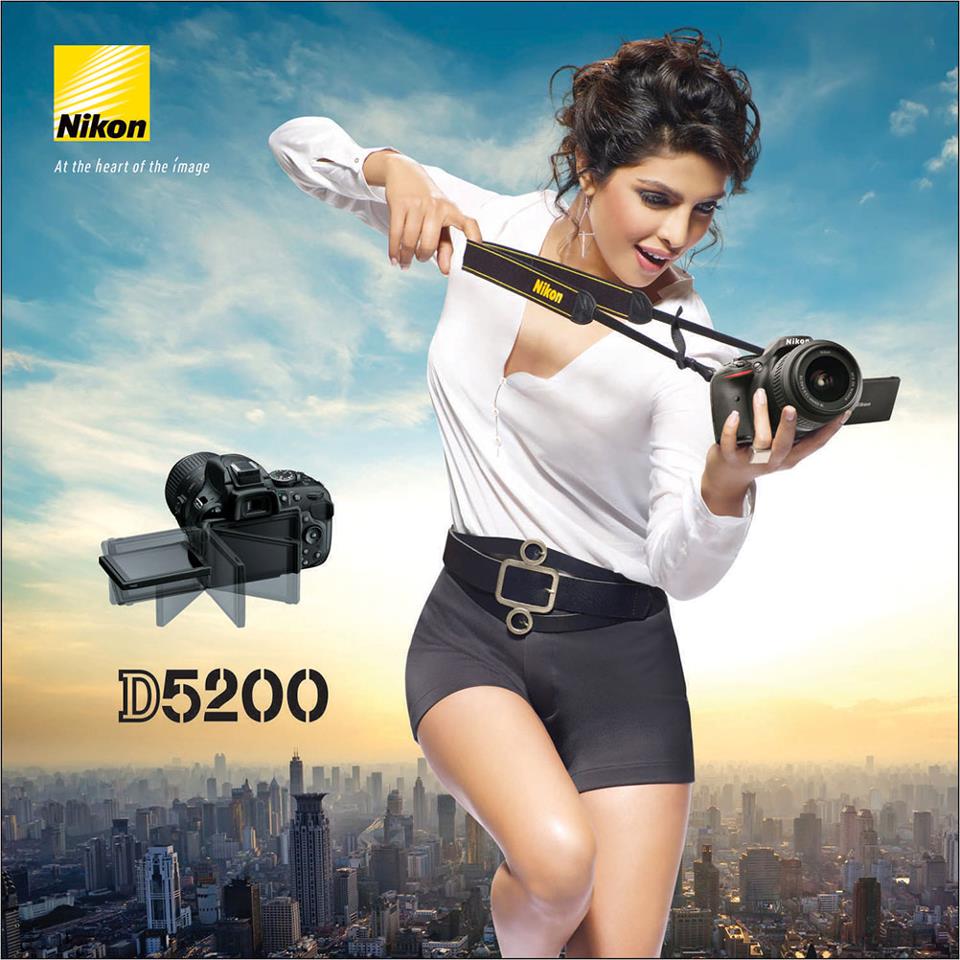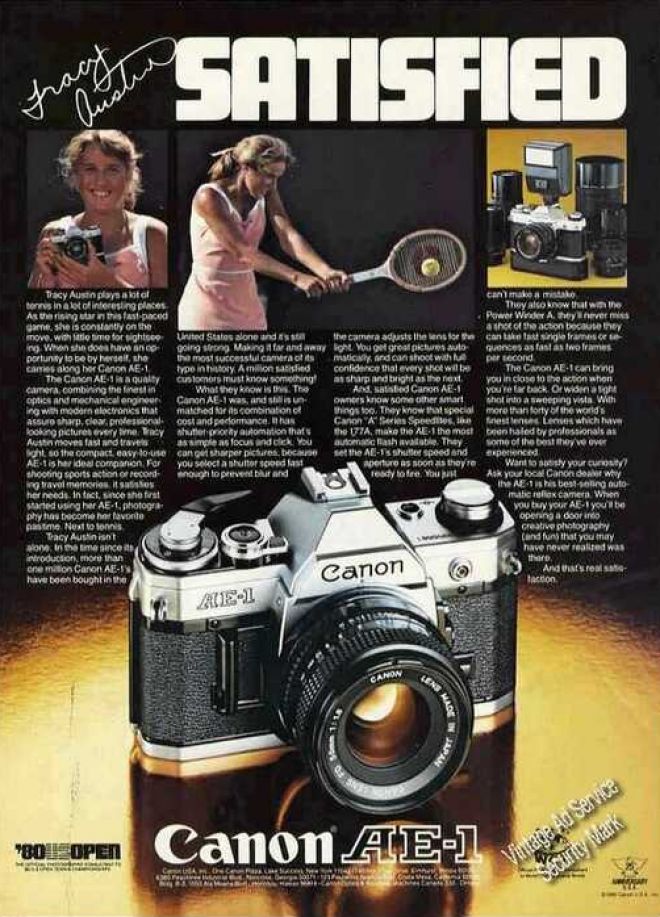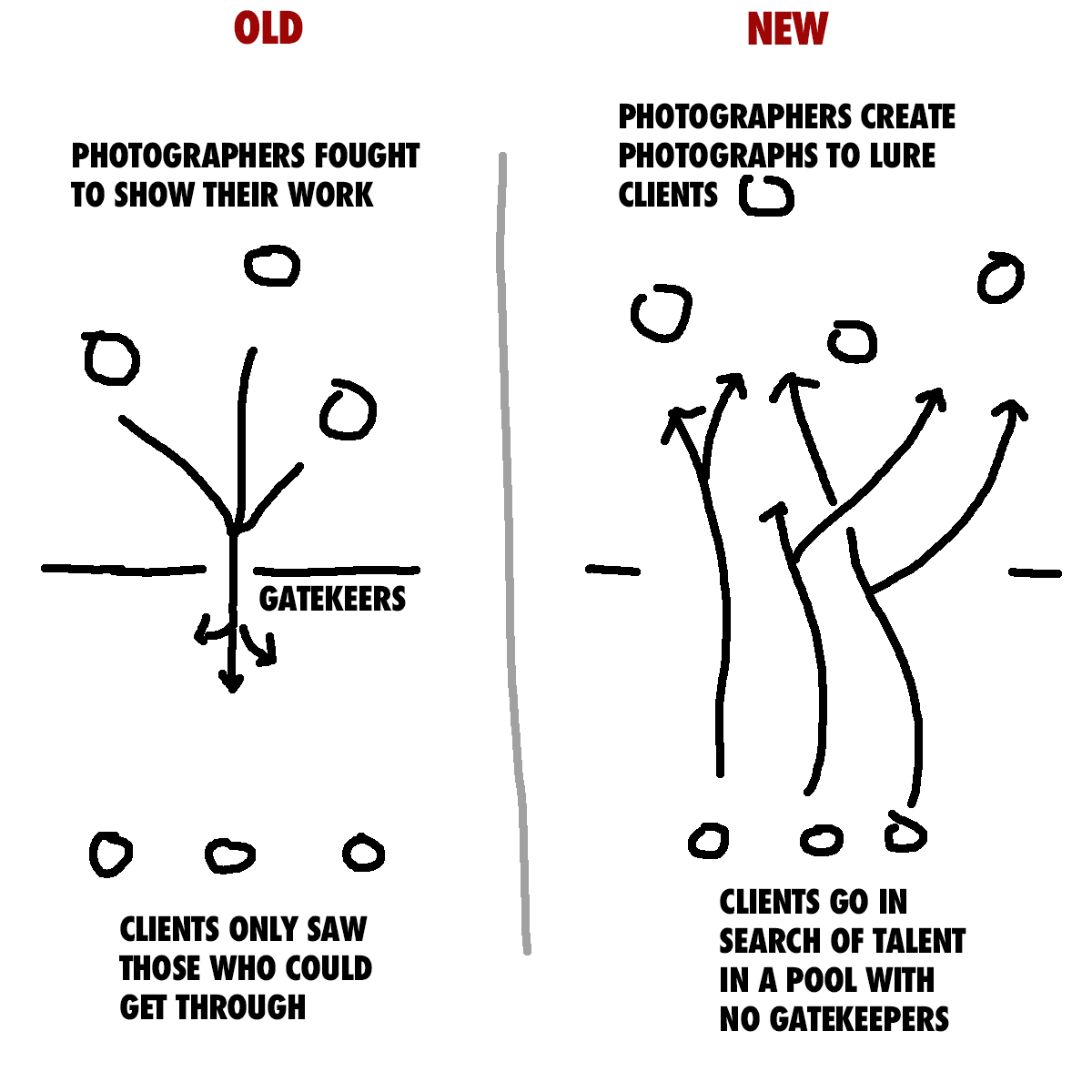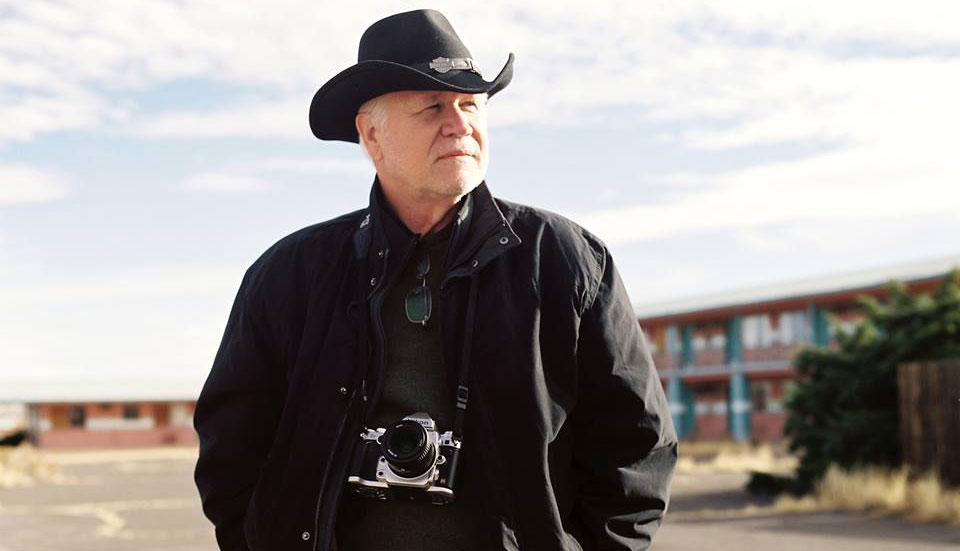IS UNSPLASH DESTROYING THE BUSINESS OF PHOTOGRAPHY?
NOTE:
MY BELIEFS HAVE EVOLVED QUITE A BIT.
I LOVE UNSPLASH AND AM A VERY ACTIVE CONTRIBUTOR.
Edited July 2, 2019
A recent article in PDN noted that Unsplash is a big business now giving away the work of many great photographers for free. There is absolutely no licensing needed when you download in image from Unsplash.
Their prognosis is that Unsplash and sites like them are wrecking the business for photographers who want to be paid for their work. This is of course a valid concern and it needs to be considered.
I am a bit on the fence here. I do not think it is destroying photography as a business, but it most definitely presents some moral and ethical challenges for all of us in the creative business.
Unsplash is owned by CREW – a design and digital production house that most definitely does NOT give their work away. They are a high end house, and get good money for their work. They are also not giving away design, illustration, music, written word, podcast content, digital art, logos, fonts, or business graphics.
Only Photography.
To me this is disturbing for several reasons (which I will cover), and yet I can also understand that it is merely a symptom of what we as a society value. And the wide traverse between top level photography and the mass of imagery that is available out in the digital world.
Apple touts the camera in their iPhone as being a professional piece of gear.
Many photographers are of course outraged. And many are all on board with the Unsplash model of community.
Let’s look at some of the reasons given by both sides.
After we allow Apple – one of the largest brands in the world – show us why they don’t think professionals are needed for every kind of gig.
Those who know me know that I am always looking at ways to market photography. My sole goal is to make photographers successful and I have done a pretty good job with Project 52 Pro and Find Photo Clients Now. I have dozens and dozens of photographers who have passed through my programs and are now working.
You may also know that (currently) I do not hate Unsplash. I also do not contribute to Unsplash.
At this point, I do not think it is killing the business and here are three reasons why.
- The images, while very good, are generic. Stock in a way. Not specific to a brand or shot in such a way that reinforces a brand. Although it is possible to grab and image that already fits a brand – or tweak an image that sorta-kinda works.
- The images come with no release, and no ‘paperwork’ so it may be buyer beware as to model and location releases. Yes, I do believe they ask up front when the photographers upload. And I also know that photographers, being mostly people, lie. We are all too aware of that to think it doesn’t happen. Any major company may be risking a lot since Unsplash covered their ass by asking, and the photographers may not have much in assets… sue the money guy!
- The images that I notice on there range from something it may take a few minutes to create (backlit flower, sunset) to images that would be super expensive to assign. (“I want you to go the Himalayas and get a sunset shot of a model doing yoga in silhouette for my local Omaha yoga blog. Can I get that for $200?”) Is it killing the assignment photography business? I am not persuaded, but it may be damaging the stock business. Oh wait… already mostly dead thanks to big corporations and stock agency power grabs back in the 90’s.
However, I am very troubled by the perceived value that is being attached to some of these wonderful images. While many of them are not that spectacularly special, some of them are indeed awesome. And yet those images get lumped into the ‘free is free’ valuation.
Nothing that is free is valued. It just isn’t. Nothing that is free will ever carry much value. Nothing that is easy and free will be of any worth at all.
Where photographers will keep their niche is in providing excellent work, on call, on point, on brand, and deliver far more than someone with an iPhone can deliver. Although that barber shop kid was pretty good.
Does giving away a few of your photographs hurt the business? (We can ask if putting your work on iStock for $12 did much for it, or the thousands of images Getty gives away for a subscription of a few bucks a month. Yeah, it is money, but the incredible drop in value was stunning and what – really – did we expect was going to happen?)
I am not sure it does. I have to look at it from the value you receive. Some would say not much, others use it as a long term marketing system designed to build awareness. A few seem to be doing well. (Kind of like life, eh?)
The problem with that approach is that it is way difficult and most people do nothing with the opportunity. To have awareness work, you have to work a system designed to magnify that awareness. And it is hard, and it takes time.
But some manage to do it just fine.
The biggest problem that I have with Unsplash is their manifesto claiming some sort of god-mandated right for photography to be free. Design isn’t free. Code isn’t free. CREW isn’t free.
However, when I was speaking to Rosh Sillars about this article, he and I agreed it may be a bit generational. Lots of young people see the ‘free’ thing as simply a way of life and they seem to be working around it. I also spoke with LaRae Lobdell and her feeling was that the manifesto was so poorly articulated from the perspective of a creative that she was immediately turned off.
Getting people to see your work is hard. Even online where hit counts for photographers websites are simply not high enough to even rank most of the time. If Unsplash can deliver hits, that not only ups the SEO PR, but it may deliver clients and interested buyers.
So we have the tradeoff. Photographers can indeed be very successful with gaining a ton of traffic from these sort of freebie sites, and that can turn into real assignment work with real money down the road.
My worry is that the value of the work will be baselined at ‘free’, so even a hugely discounted rate for a professional shoot would seem premium when all they had to do was download an image before.
On the other hand, I also see the immense value in creating more visibility and community. My feelings on the value of the image aside, the value of visibility, access, and virality cannot be ignored.
So many questions… But – just as in contemporary politics – those who align on either side do so with a commitment to principle. So changing anyone’s mind ain’t gonna happen.


ARTICLES AGAINST UNSPLASH
“Unsplash isn’t helping the photographers sell the photos or even promote their work. To me it seems like they’re on a path to make everyone believe they don’t have to pay for photography anymore. Every day I see Unsplash photos being used and abused literally everywhere.”
“Yes, it’s finally happened. A “photo community” is asking contributors to go ahead and give up all rights to their images, including for commercial use. Unsplash, which aggregates photos “gifted by the world’s most generous community of photographers,” has written truly jaw-dropping Terms that encourage photographers to let anyone use their images for no fee.”
“My photography keep improving, more people stumble on my work and I’ve got more contacts, more projects, and clients than before.”
PRO UNSPLASH ARTICLES
Linkedin Article by Kevin Chong
“To succeed, you not only have to be good at what you do, you need to know how to market your work too. And here, I have a top tip for Ms Boguslawska. It’s not a bad thing to give away something of value. That is marketing. And it’s actually quite good marketing, if you do it right.”
“As a creative in the digital world, you are constantly cautious about where you post your work and what happens with it. It’s very easy to just take somebodies work and neglect the rights of the creator. I am not saying you should stop caring about people stealing your work, but Unsplash provided me with a very important realization: I am not selling my work, I am selling my skills. The photos I put up on Unsplash is not the work I feel doesn’t ‘deserve’ to be sold but rather photos I actually consider to be one of my best.”
“Out of the gate, as a professional photographer, this totally bums me out. I don’t need any more photographers offering up their services for FREE!”
“I am very upset at the self-serving way the manifesto is written. It is not something I would want to be involved with.”
The only way a photographer is going to keep ahead of the technology is to focus on his/her brand and create images within that brand.
Freelancer? Available to hire? Tell people! — Add that to your profile. We’ve heard from photographers who have received paid work as a direct result of their Unsplash profile (I’ve had approaches myself through mine).
This post isn’t really about Unsplash. It’s about any good opportunity for a something that helps you’re site rank in a way that doesn’t steal your soul. I like Unsplash a lot, so I was excited to look at the data.
PHOTOGRAPHER CRAIG FERGUSON WITES:
“Some thoughts on free.
I think the question of whether it devalues photography is largely irrelevant today. When I first joined an online photography community – photo.net – back in 2001 or so, one of the frequent discussions then was the devaluation of imagery as the royalty free stock model came into play. Discussions were always that photographers should only do rights managed because RF devalues the image. License fees under RM might be hundreds or thousands or more per image. With RF, they’d generally be under $100. Then microstock came along, and the discussion of devaluing continued as microstock offered 50 cent images. That was more than a decade ago. Add on Flickr with the Creative Commons model, and I think things were pretty much set years ago. The current free discussion is not really any different, it’s just that buyers have had years of access to extremely cheap stock photography now, whereas when RF, microstock etc were starting cheap digital stock was new. Now it’s not. All the discussion in the world is not going to change that.
I recently tagged a local startup run by a brother and sister team. I’ve met the sister briefly, and like what they do. She asked me if they could use one of the photos and I said yes. At the same time, I’d been discussing a collaborative personal shoot with her which we’ll do in a couple of weeks. Now it’s extremely unlikely that this company will ever be a big enough company to need a lot of imagery. They can probably make enough to make a living but they’re too niche to really grow in the market and location they’re in. So I don’t mind letting them have shots that are 100% my creative ideas because I can turn around and use that as my own marketing to offer ideas to the larger market throughout SE Asia. That’s a win-win in my book.
So much of what I’m hired to shoot is someone else’s idea. Editorial gives some leeway for my own creativity but I often have no control over location or subject. But letting select people have free images when the creative is completely my idea benefits me. Now, it’s not just my website and social followers that will see them, it’s everyone connected to the people I’m giving imagery to. The key is that I’m shooting what I want to shoot. I’m not going and shooting someone else’s creative ideas unless it’s a true collaboration where we’re brainstorming ideas together.”
— CRAIG FERGUSON, PHOTOGRAPHER, TAIPEI, CHINA
Craig was recently profiled on Lighting Essentials. You can read his interview here.
QUORA:
What do photographers think about unsplash.com?
“I’m not a professional photographer, but I’ve shared some of my photos hoping to be noticed. For photographers, I think, is a good platform to show some examples of their own work, but obviously not the right place to get a direct income.”
DMITRI POPOV
What is Unsplash and Why You Might Like It
“What makes Unsplash a particularly attractive sharing platform is the lack of incentives for gaming the system. The design of the traditional photo sharing services invites users to exploit the system to get more attention and followers.”
MEDIUM
Why Unslplash is Hurting Photographers
“I don’t mind a utopian world where everything is free and everyone loves what they do. Our world is far from that and photographers, as well as designers, painters, web developers etc. have to earn money with their creativity, often striving with demanding and stingy clients.”
QUORA
Is it safe to use unsplash images?
“Yes, it’s possible someone uploads a stolen photo to Unsplash. Just as it’s possible they upload a photo without a proper model release or property release. Or a forged release. “
WHAT IT LOOKS LIKE AFTER THE HORSE HAS LEFT THE BARN…
PHOTOGRAPHY AND MUSIC SHARE A DESTINY… MAYBE
Musicians make little to no money with recorded and archived music (library).
“An independent label with a Spotify deal like Mode’s wouldn’t even earn a penny from someone streaming a movement of that symphony. Less than a penny, because it’s $0.006 for a stream! In fact, it’s $0.024 for the entire symphony. But with downloads you would have to buy the entire album for a relatively fair price. The ones profiting from all this, aside from the consumers, are those who offer these platforms for accessing music for cheap. And people don’t think about that, they don’t see anything wrong with it. These huge companies get a free pass from the general public, they appear beyond reproach.”
— Brian Brandt, discussing the real challenge of streaming music: the fact that the musicians do not get enough money to make more music. Read the article here; Cannibalization.
So modern musicians have had to find other ways to make their money. Concerts, teaching, creating music for film, indie recordings, playing live.
Alternative channels.
The recorded music is now basically given away in order to build an audience willing to shell out $75 for a live venue show.
Youtube artists know and understand this so well. YT celebrities like Peter Hollens, Lindsey Stirling, and Nick Pitera know that building an audience is more important than signing with a label. So they focus on the giving away of their music in hopes that a portion of their fans will indeed purchase the music from them.
“Violinist extraordinaire Lindsey Stirling is YouTube’s top-earning musician, raking in an estimated $6 million in the 12 months ending in June, according to a Forbes list of the video site’s highest paid stars.”
— Billboard (2015 – she is worth even more now)
Stirling doesn’t have a label. Stirling doesn’t have recordings in music stores. She makes music on Youtube and then sells it independently to those who enjoy the work.
Would photographers be able to copy this trend?
Yes. Possibly.
While there are indeed similarities in the creative / product, the main difference is in the use. Usage of the image after it is created is the only way a photographer can monetize that specific image. But if there were a way to monetize the aggregate, then it would be possible to create a new and different business model based on the visibility of the images and how they can drive non-generic commissions.
In other words, a beach is a beach is a beach – until you make it a specific beach with specific qualities set to expand the reach of a specific brand. And that brand may know you are the best beach shooter for them because you have engaged them for the past year with your awesome beach shots.
OLD MODEL VERSUS NEW MODEL
In the old model, a small group of photographers had to fight to get through the gatekeepers (institutional and literal) to show their work to the small group of clients who would be in a position to hire them. There were only a few ways to do it; show up in person, send direct mail (expensive), purchase a page in a workbook (very expensive). Getting through the assistants, and secretaries, and phone messages meant that only a few of the photographers ever finally made it to the pristine office of the great buyer.

In the new model, photographers create work that draws clients to them. There is no gateway going out, so art directors, art buyers, designers, and marketers can go in search of photography and photographers that inspire them. The key for the photographer now is to make sure their photographs are in the same places the art directors are looking.
Instagram, Behance, Unsplash and more. Art directors go to those places – they do. You know they do.
And perhaps the photographers with some visual authority there carry more weight with those viewing the work.
At least I would think so.
People like Chris Burkard, Casey Neistat, and Gary Vaynerchuk know the power of being visible and being in front of as many people as possible. It translates into commissions, notoriety, and channels of income not able to be monetized without that visibility.
So in the end, I don’t know if it works to give stuff away. I can say that there are some pretty big players in the game doing just that. And I also know there are no Clint Eastwood films on Netflix. So both sides have a valid argument.
But the truth – as I see it – is that if you are not going to play the visibility game, you are sure as hell going to have to do the hard work of outreach marketing (3-5 calls a day, due diligence with mailers, email campaigns, contest involvement – whatever) because you are still dealing with those same gatekeepers as above.
it is a choice, and there is no easy answer. Choose wisely.

Have you wanted to take a look at the Project 52 workshop without committing for a year?
Well here is your chance. An 8 Week Project 52 Pro Membership is ready for you to get into - NOW. And it is the full deal. All of the resources, assignments, reviews, webinars and more are there for you to work with. This is NOT a truncated offer, but a full opportunity for you to take advantage of the most unique photographic workshop on the internet.
Real-world assignments, with art direction, layouts, brand ID info and more. This is shooting just like a commercial photographer in any city shoots. And it is an introduction to a lot of different genres, styles, challenges, and subject matter.

